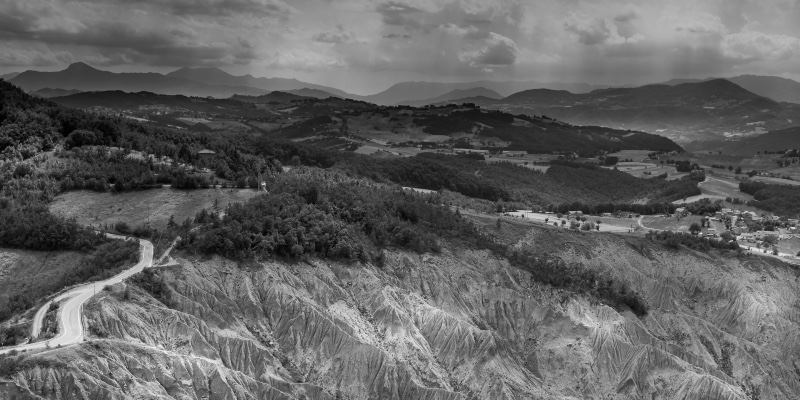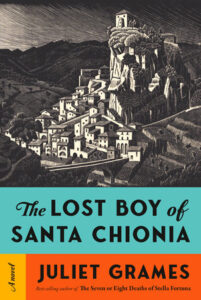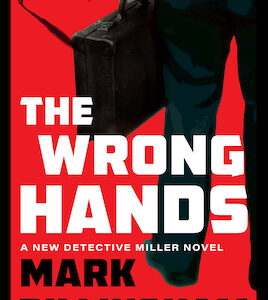“We don’t have that kind of problem around here.” This is the first thing Santo Alvaro* says to me when I ask him about the ’Ndrangheta. “The mafia is all in the city, in Reggio and Milano. You don’t have to worry about that at all in this area.”
Alvaro is a third-generation restauranteur in Condofuri, a municipality of 5,000 in the Amendolea River valley in southern Calabria, forty minutes by car from Reggio, Calabria’s largest city, and forty kilometers due south of the impenetrable heart of the Aspromonte mountains, the cradle of the ’Ndrangheta, Italy’s most powerful organized criminal syndicate.
Alvaro has cheerfully agreed to a background research interview with me for a historical novel I have explained I am writing. It is lunchtime; he has set me up at a red checked cloth-covered table in the establishment’s rustic farmhouse-style dining room, brought me a rich spread of antipasti, and sat down to join me for a glass of wine while we talk. I nod, smile, take notes, and do my best to look completely credulous.
“So you’ve never had ’Ndrangheta soldiers come here and bother you?” I ask. I have read that every single business in this area either pays a protection fee to the local clan or gets burned down.
“Bother me?” Alvaro asks blankly.
“Demand a protection fee or anything like that?”
“No, never. A little business like mine? Why would they bother? They make all their money on drugs.”
It’s true that the ’Ndrangheta make their buck in drugs, and that they are the big time. The Europol threat assessment labels the ’Ndrangheta “among the most threatening OCGs [organized crime groups] at a global level.” Thanks to the 2023 maxi-trials, in which over 300 members were arrested, the world is a little more aware of the enormous net of ’Ndrangheta influence—a “quasi-monopoly” in drug trafficking between Europe and South America. But they’ve been involved in a lot of other enterprises, too: sex trafficking, intimidation and protection rackets, armed robberies. The ’Ndrangheta first came to international attention with the 1973 kidnapping of John Paul Getty III, and over the forty years following they emerged from the subtext of Italian organized crime with two mafia wars, acts of terror, and high-profile murders. Thanks to the massive emigration out of Calabria since the end of WWII, ’ndrine—that is, the family-based clans that make up the amorphous ’Ndrangheta—have rerooted themselves in enclaves all over the world, from Australia to Canada to Germany to Colombia, a spread referred to as colonization. The Europol report goes on to state that “all profits have skillfully been reinvested in sophisticated money laundering techniques.” One of the most sophisticated of these is the education of ’ndrina children, whose college degrees and white-collar pedigrees have put them in positions of political and economic power to help smooth the bumpy roads to profit for the boys back home.
But it’s also true the ’Ndrangheta, for all its globalism, has always been and still is a tightly familial, village-centric organization whose grass roots are right here in the Aspromonte foothills. The institution’s very name speaks to its highly local origins: if “’Ndrangheta” doesn’t sound like an Italian word to you, that’s because it’s not; it’s Greek, meaning something like “man of courage.” The Aspromonte mountains are still dotted with villages that speak Greco, a language drawn from Classical and Byzantine Greek and fused with more recent Calabrian-language inflections.
The origins of the group are deliberately murky, but there is concrete written record of networked criminal activities throughout the Aspromonte villages dating back to the 1860s, with compelling evidence of predecessor structures predating the Napoleonic Wars in Southern Italy. The mythologizing in popular culture has linked early “gallant men of action” to guerilla resistance movements against heartless Bourbon overlords, and later against Garibaldi and the Piedmontesi oppressors (or what other parts of Italy describe as the Unification. In the remote villages of the Aspromonte, long suffering under the yoke of exploitative feudalism, peasants dreaded to travel the roads between villages because of the brigands, and goatherds broke even on their ricotta sales only if they knew how to make a little on the side. It was a truly desperate time and place—a lifestyle so harsh it drove half its population away entirely; many of us Italian-Americans owe our Americanism to the hardship our ancestors felt forced to leave behind. During these merciless years under Bourbon and then Italian occupation, a culture developed of proud resistance to dehumanizing power structures. One exemplary folk hero is the brigand Giuseppe Musolino, “King of the Aspromonte,” who allegedly stole from the rich and gave to the poor until he was apprehended by law enforcement in 1901 and sentenced to an insane asylum. (The scholarly argument has been made many times over that Musolino was more of an opportunistic cold-blooded killer than a philanthropist; that has not unwritten the folk songs about him.)
Looking to one code of violence to protect you from another is an imperfect social model, to say the least. By the advent of the twentieth century, the towns of southern Calabria lived in thrall to self-appointed gangster kings. A code of silence was insured by intermarriages among friends and cousins to keep the secrets, and the wealth, in the family. When every family is related, everyone’s children, nieces, and nephews become collateral damage if someone tries to attack the system. When you live in a village—especially one that has been separated geographically and/or socially from mainstream society, you are connected to every other person in the village; you are implicated in their misdeeds, and you cannot stand against them without standing against your own family. Don’t get me wrong: people have stood against the ’Ndrangheta, bravely, sometimes at the expense of their lives. But often even this resistance must happen behind closed doors and shuttered windows. The least dangerous choice is to simply pay the protection, or to gently, passively find the loophole that allows one to look the other way.
“What about your grandfather, or your father?” I ask Santo Alvaro. “Did they ever have trouble with mafia back in the early days of this business?”
“No, why would they bother a restaurant?” he replies. But then he pauses, and I wait. By now we have been talking for two hours and have emptied the carafe of wine. “There was one time that a local boss tried to get my father to pay him a fee,” he admits finally. “My father said no. That’s the only way you can deal with these people—just stick to your no right from the beginning, never accept even the smallest courtesy from them, or you start to owe them things. Well, the guy tried to scare him. He sent two ragazzi to our house in the middle of the night—I was eight years old. My father heard the pounding on the door and before he got up to answer it he took down his rifle from the wall. He answered the door calmly, with the rifle pointed at them, and he told them to go away and never come back. And they didn’t.” He shrugs. “If you stick to your guns they leave you alone, they know you can’t be corrupted.”
Who exactly, I wondered, were “they”?
Why aren’t we more aware of this deadly organization? The ’Ndrangheta is, by design, difficult to depict or discuss, impossible to pin down. Americans have been trained by media to think of a mafia as a secret organization—they think of “made men” and omertà and clan reprisals. But the truth of the ’Ndrangheta is much more insidious. Anna Sergi, a professor of criminology and one of the world’s foremost experts on the ’Ndrangheta, describes the organization as a “brand” that unifies a highly fragmented and diverse set of criminal enterprises. It is an endemic mafia, omnipresent, born of and protected by blood ties. In short, everyone is involved in the ’Ndrangheta, by choice, by force, by association, or by default.
You can learn the basics about the ’Ndrangheta from some excellent texts. For a thoroughly researched history, try professor John Dickie’s comprehensive Blood Brotherhoods: A History of Italy’s Three Mafias. For a grim and eye-opening depiction of the ’Ndrangheta in its modern incarnation, you can’t do better than Alex Parry’s The Good Mothers: The Story of Three Women Who Took on the World’s Most Powerful Mafia (spoiler: the story does not end happily).
But some of my favorite literature about the ’Ndrangheta is fiction. The Calabrian novelist Saverio Strati (1924-2014) is acknowledged as the first writer to depict the ’Ndrangheta. His 1957 novel La Teda, published in English as Terrarosa, is a haunting and disturbing fictional recreation of the flour rebellion in the infamous ’Ndrangheta town of Africo. Gioacchino Criaco’s 2008 Black Souls, which I had the privilege of editing in English translation, is a stirring depiction of the cocktail of displacement, dysphoria, and dreams that make a boy into a gangster.
“Did anyone you grew up with ever join the clans?” I ask Santo.
He has grown solemn over the course of our conversation, while he has recounted local histories and family memories. He is particularly solemn now when he answers, “No one with any intelligence wants that way of life. Only an idiot thinks it’s a good way to make quick money.” He gestures to his beautifully pergola’d patio. “They think they can come around here and eat and drink all night then walk away without paying a bill. I’ve made it clear. When I see them, I tell them I’m not going to serve them.”
I wonder how often he does see them, considering that a few hours ago he told me they didn’t exist.
The December sun is setting; I must leave my lunch, as I have a dinner engagement soon. I try to say my goodbyes, but Alvaro has disappeared to help other customers, and the bill refuses to come. There is no bill, the waiter explains at last when I flag him down.
As I walk away without paying, I wonder what small service I have accepted today, or what the quid pro quo is. Maybe that I am not supposed to write it down.
***
*Names and identifying details in this article have been changed for obvious reasons.


















